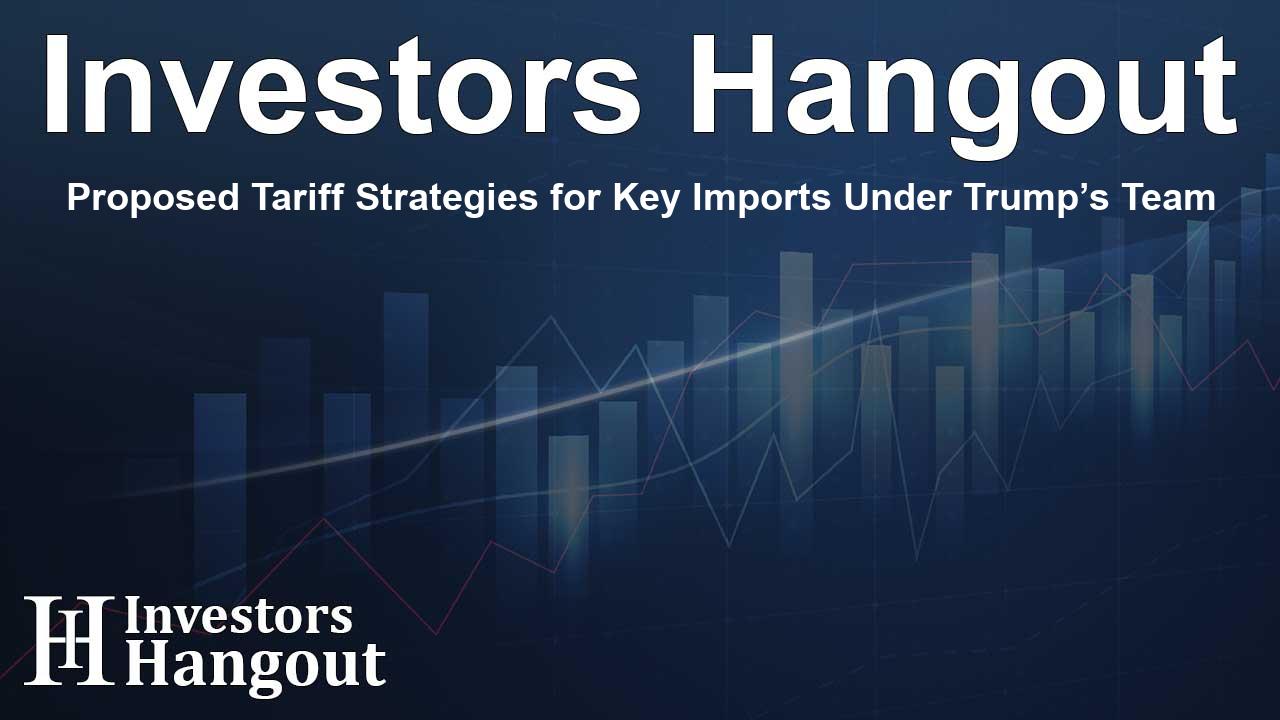Proposed Tariff Strategies for Key Imports Under Trump’s Team

Proposed Tariff Strategies for Key Imports Under Trump's Team
U.S. President-elect Donald Trump's team is actively investigating the implementation of tariff plans that could affect crucial imports across various sectors. This initiative, as reported, aims to address imports deemed essential for national and economic security.
Focus on Critical Sectors
The discussions surrounding the tariffs highlight a strategic pivot. Rather than imposing blanket tariffs on all goods, the emphasis is on limiting tariffs to specific sectors critical to the United States. The plan, as disclosed by several individuals familiar with the situation, appears to be fluid and is still undergoing deliberations.
National Security Concerns
Reports indicate that certain sectors are at the forefront of these discussions, particularly those associated with national security. Tariffs on supplies critical for defense are likely to be included, targeting materials like steel, iron, aluminum, and even crucial metals such as copper.
Health and Medical Supplies
Additionally, the proposed tariffs could extend to medical supplies. This includes everyday essentials instrumental during health crises, such as syringes, needles, vials, and other pharmaceutical components. Ensuring that these supplies are locally sourced could be pivotal during emergencies.
Potential Impact on Trade
During his campaign, Trump vocalized a commitment to impose tariffs of 10% on all global imports, alongside a more substantial 60% tariff on goods coming from China. Economic analysts suggest that such measures would dramatically alter trade dynamics, increasing costs and potentially provoking retaliatory measures against U.S. exports.
Return of Manufacturing
The Trump administration's aides are reportedly concentrating on revitalizing manufacturing sectors that had been significantly diminished over the years. By using tariffs as a tool, the administration hopes to incentivize the return of production capabilities to America.
Current Status of Tariff Discussions
As things currently stand, the aides have conveyed that these tariff strategies are still in a state of evolution and have yet to be finalized. Nonetheless, discussions within the team suggest a clear intention to prioritize American manufacturing and economic resilience in the face of global competition.
Frequently Asked Questions
What sectors are being targeted for tariffs?
Discussions include critical sectors such as defense, healthcare, and energy production.
How might these tariffs affect trade relations?
Tariffs could potentially lead to increased costs and retaliatory actions from other countries.
What is the rationale behind imposing these tariffs?
The goal is to enhance national security by focusing on crucial imports and reviving local manufacturing.
Are the tariff plans finalized?
No, the tariff plans are still in flux and have not been formally approved.
What types of goods might be affected?
Goods such as steel, aluminum, medical supplies, and vital electronics are under consideration for tariff inclusion.
About Investors Hangout
Investors Hangout is a leading online stock forum for financial discussion and learning, offering a wide range of free tools and resources. It draws in traders of all levels, who exchange market knowledge, investigate trading tactics, and keep an eye on industry developments in real time. Featuring financial articles, stock message boards, quotes, charts, company profiles, and live news updates. Through cooperative learning and a wealth of informational resources, it helps users from novices creating their first portfolios to experts honing their techniques. Join Investors Hangout today: https://investorshangout.com/
Disclaimer: The content of this article is solely for general informational purposes only; it does not represent legal, financial, or investment advice. Investors Hangout does not offer financial advice; the author is not a licensed financial advisor. Consult a qualified advisor before making any financial or investment decisions based on this article. The author's interpretation of publicly available data shapes the opinions presented here; as a result, they should not be taken as advice to purchase, sell, or hold any securities mentioned or any other investments. The author does not guarantee the accuracy, completeness, or timeliness of any material, providing it "as is." Information and market conditions may change; past performance is not indicative of future outcomes. If any of the material offered here is inaccurate, please contact us for corrections.